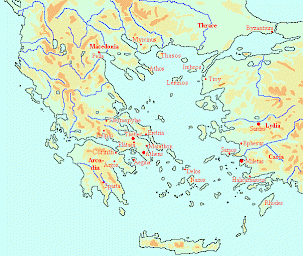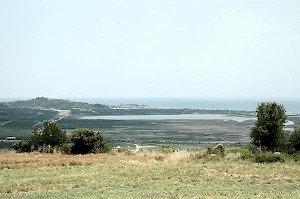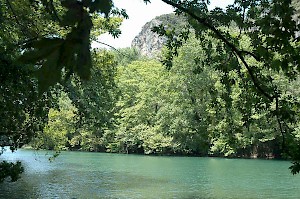Herodotus, bk 7, logos 21
Herodotus of Halicarnassus (c.480-c.429 BCE): Greek researcher, often called the world's first historian. In The Histories, he describes the expansion of the Achaemenid Empire under its kings Cyrus the Great, Cambyses, and Darius I the Great, culminating in Xerxes' expedition to Greece (480 BCE), which met with disaster in the naval engagement at Salamis and the battles at Plataea and Mycale. Herodotus' book also contains ethnographic descriptions of the peoples that the Persians have conquered, fairy tales, gossip, and legends.
The Persians cross to Europe (7.56-137)

This logos opens with evil omens, which Xerxes prefers to ignore. From the Hellespont, his army moves to the west along the Thracian shores, until the soldiers reach Doriscus, where the great king counts all his troops. Here, Herodotus inserts a marvelous catalogue of all troops that took part in Xerxes' invasion of Greece; he admits that he does not know the precise number of men provided by the forty-something nations, but he estimates the grand total at 1,700,000. The number of ships is 1207, transport ships included. All Persian commanders are mentioned; the most important generals being Mardonius, Tritantaechmes, Smerdomenes, Masistes, Gergis and Megabyzus; the admirals were Ariabignes, Prexaspes, Megabazus and Xerxes' brother Achaemenes.
After his inspection of the army and the navy, Xerxes discusses his prospectives with former king of Sparta, Demaratus, who a decade before had been exiled by king Cleomenes (see above) and had found asylum at the Persian court. The Spartan predicts huge difficulties, an answer that Xerxes turns off with a laugh.

The army and the fleet move along the coast into Macedonia. Xerxes sacrifices nine boys and nine girls at Ennea Hodoi before crossing the river Strymon. Finally, the entire force reaches the town Therma (modern Thessaloniki), not far from the river Axios. Here, all men can rest, while the great king sails along the coast to the mouth of the river Peneus and to Tempe, the narrow gorge between the mountains Ossa and Olympus through which this river runs.
At the same time, Persian engineers are preparing roads through the Macedonian forests, so that the soldiers can pass along the Olympus in the west. Meanwhile, heralds demand earth and water from the Greek towns. Among those surrendering to Xerxes are theThessalians and the Thebans.
To Athens and Sparta Xerxes does not send a request for submission, since these proud cities had refused to listen to the heralds that Darius had sent to them eleven years before (above). In both cities, the messengers had been thrown into a pit - if they wanted earth and water for their king, that was the place to get them from.
Comment

Probably, Herodotus' catalogue of the Persian army goes back to a spies' report. In the first weeks of 480, the Persians caught three Greek spies who were trying to find out all they could about the king's army, which had assembled at Sardes. When Xerxes was told that they were about to be executed, he ordered his guards to take them round and let them see the whole army, infantry and cavalry, and then, when they were satisfied that they had seen everything, to let them return to Greece. Xerxes' clemency was calculated: he was confident that the report of the spies would induce the Greeks to surrender before the actual invasion took place, so that there would be no need to go to the trouble of fighting a war at all (text). The trick was partially successful: Thessaly and Thebes did offer earth and water.
Herodotus' catalogue can be compared to contemporary Persian documents, like Xerxes' own list of subject countries in his Daiva inscription. After hearing this catalogue, any Greek listener knew that he was going to hear a story of epic dimensions; Homer had already included a similar catalogue in Book Two of the Iliad.
Modern historians estimate the total number of combatants and non-combatants in the Persian army at 220,000 soldiers, a rearguard of 20,000 men guarding the lines of communication, and some 40,000 men serving on the ships. We may believe Herodotus' statement that they drunk many a river dry; and we understand why Xerxes postponed his attack until his Macedonian and Thessalian allies had stored their harvests. Xerxes reached Therma in July, where he paused in the hot month of August.